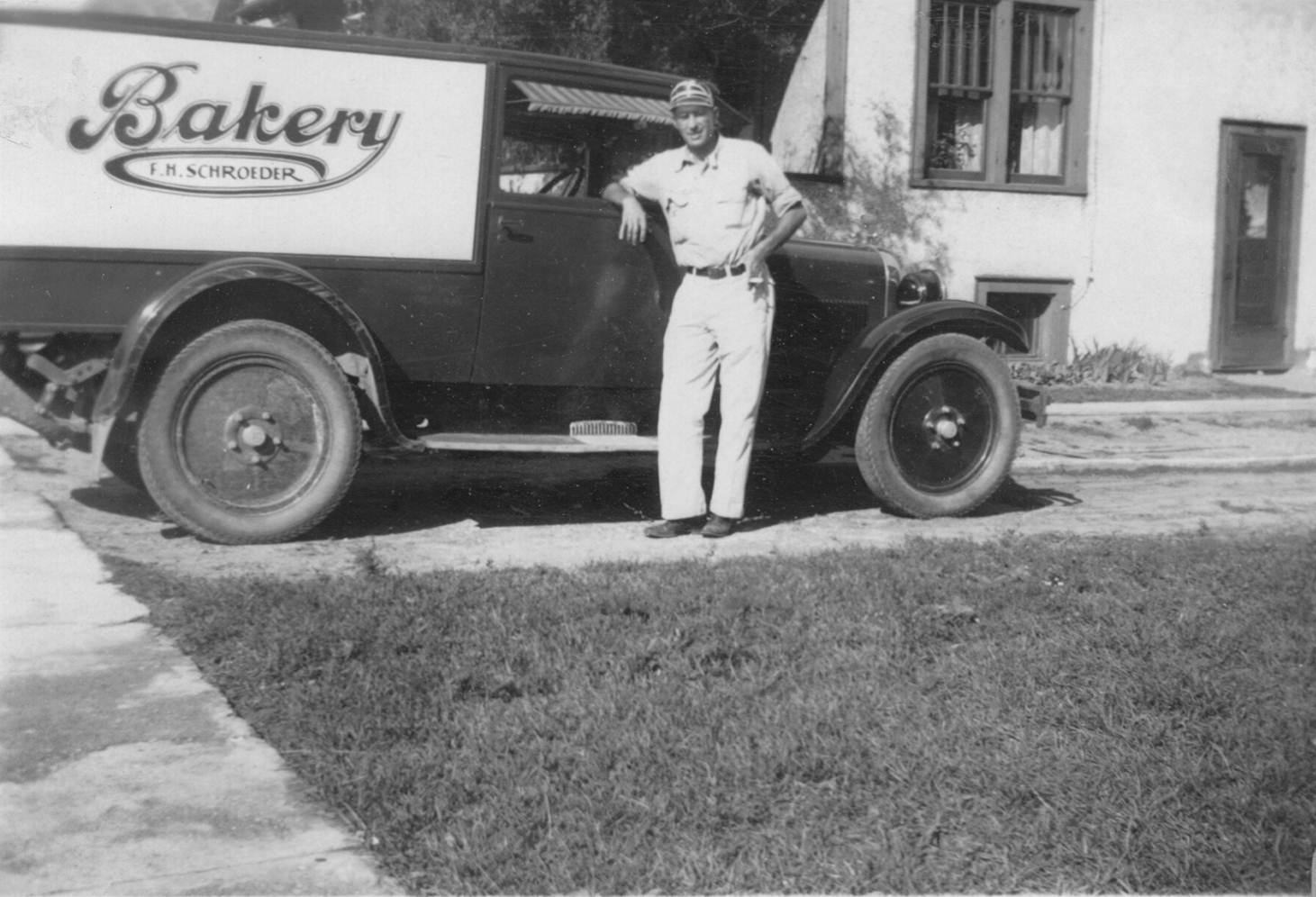Mobile pie truck staved off hunger during Great Depression
By Robin Amer

Mobile pie truck staved off hunger during Great Depression
By Robin Amer
Fred Schroeder and Elsie Christiansen were a young married couple building their life in rural Wisconsin when the Great Depression hit.
He was a former farmhand, and she, a first-generation Danish immigrant. When Fred lost his job at Wisconsin Power and Light, the young family needed a new plan.
They took a tack both novel and familiar – at least perhaps to today’s striving food truck vendors: They refashioned themselves as entrepreneurs and launched a baked-goods delivery service.
Schroeder and Christiansen’s daughter, Shirley Cherkasky, a retired culinary historian and co-founder of the pleasingly-acroynmed Culinary History Enthusiasts of Wisconsin (CHEW), recounted her parents’ story at a recent event in Chicago. She explained that despite the tough economic times, most of the farmers around her hometown of Two Rivers, Wis. didn’t have the time to bake their own bread, pastries or pies. So her father bought baked goods wholesale from a local bakery, retrofitted the family car into an early version of a bakery delivery truck, and went from farmhouse to farmhouse taking orders.
Soon though, Schroeder had a revelation. He was dissatisfied with the pies from the town bakery and realized, “Elsie could make better pies than that!” his daughter now says. Cherkasky gave no hints of how her mother felt about being drafted into the endeavor. And drafted she was. Schroeder bought a slew of 9-inch tin pie pans from the Sears Roebuck catalogue and hole-punched a trademark “S” in the bottom of each pan, then turned the rest over to his wife.
Cherkasky says her mother baked 14 to 20 pies a day, six days a week. They were single or double crust and filled with seasonal ingredients: apple, raisin, cherry, peach or pumpkin. There were also banana, coconut or chocolate cream pies, as well as lemon meringue, depending on what the farms ordered. Each pie cost 25 cents.
Christiansen’s baking endeavors were no small feat. As a family scraping by in the late ’20s and early ’30s they lacked the kind of modern conveniences and labor-saving devices today’s chefs – domestic and professional – now take for granted. It was a time before refrigeration, before commercial ranges, when an ice pick was considered an essential cooking tool. In the audio above, Cherkasky describes her mother’s humble kitchen, and the culinary delights to which it gave rise.
Dynamic Range showcases hidden gems unearthed from Chicago Amplified’s vast archive of public events and appears on weekends. Shirley Cherkasky spoke at an event presented by the Culinary Historians of Chicago in April. Click here to hear the event in its entirety.